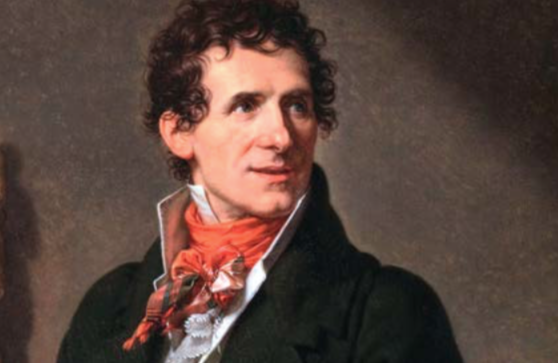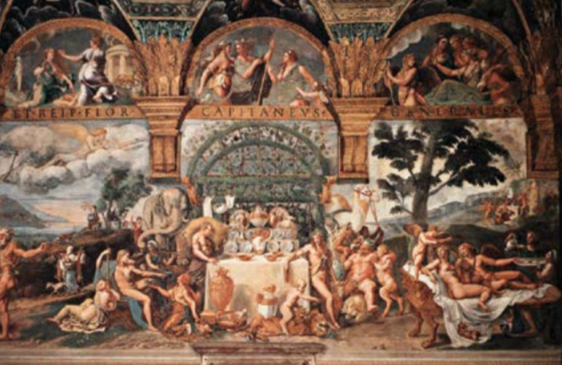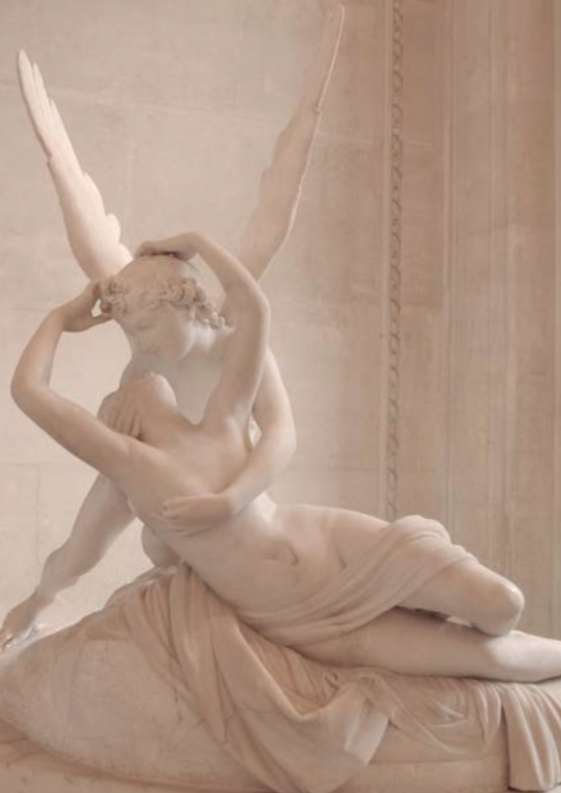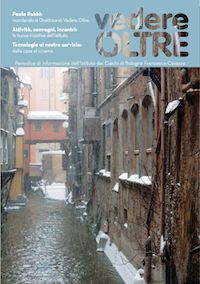The fable of Cupid and Psyche was already known to the ancients, so much so that the first references to this myth are found in Meleagro, while the most complete narrative came to us through books IV and VI of the Metamorphoses or Apuleio's Golden Ass, a Latin opera consisting of eleven books and written in the second century AD. But Psyche as the personification of the human soul in mythology appears only in old age. The myth was then reinterpreted in the Neoplatonic tradition and then in a Christian context, with reference to the theme of the immortality of the soul.

The most frequently depicted episode is the moment when Psyche, encouraged by her envious sisters, decides to discover the true face of Cupid, challenging his will to remain hidden. Psyche and Cupid, often represented as two winged youths, are also the protagonists of a myth linked to initiation rites and access to the underworld. In the story of Apuleius, Psyche is the daughter of a king and a girl of extraordinary beauty who unleashes the jealousy of Venus, mother of Love, who orders her son to arouse in her the passion for someone hideous. But the god falls madly in love with the girl, unaware of the evil design of Venus, and failing in his task, to defend and love her, he has her brought to a protected and wonderful palace where he can visit her each night without ever revealing who he is, always departing before sunrise. Cupid has only one condition to Psyche: that she not try to unveil his true identity, otherwise she will be abandoned. One night after Cupid falls asleep, Psyche carries out the plan her sisters devised, believing that he could be the dragon suggested in Apollo's oracle. Pregnant with a son and perturbed by the impossibility of seeing him, she decides to come near him silently to see his face.

She brings out a dagger and a lamp she had hidden in the room, in order to unveil the mystery around the nature of Cupid. Inadvertently, she spills hot oil from the lamp on the god's shoulder, waking him. Disappointed, he flees and abandons her. In her desperate search for her lost Cupid, Psyche arrives at the Palace of Venus where the goddess, moved by anger, submits her to numerous challenges that the young woman manages to overcome. Meanwhile, Cupid, inconsolable in his suffering, sets out in search of her beloved and, having found her, decides not to abandon her again, asking Jupiter for permission to marry her. Jupiter gives his consent and orders Mercury, God of trade and messenger of the gods, to conduct Psyche on Olympus, where she will be given the drink of immortality.

The story of Cupid and Psyche has fascinated Renaissance culture, which saw in it the metaphor of the long and non-linear cognitive path that leads the soul to beauty and goodness through Love and therefore through experience, sacrilege and destiny, loss and redemption. Although the myth is known only relatively late in literature, which does not go beyond the Hellenistic age, it is likely that it reflects religious contents of much older origins: in this sense, were mostly interpreted the dark aspects of love between the two protagonists, Psyche's shunning, the interdiction of seeing the beauty of Cupid (Eros), the obstacles which Psiche is subjected to by Aphrodite. Initiation rituals and references to the underworld are here overshadowed by the literary dress of the myth. In numerous sixteenth-century noble palaces the fable has been represented in decorations whose nature of mythography, corresponding to the classical text, is still open to many interpretations. The Palace of Te, in Mantova, documents one of the most interesting versions of this myth. For the past ten years, it has made an accessible visit dedicated to blind and visually impaired people, curated by the Tactile Museum of the F. Cavazza Institute of the Blind, aimed at making accessible mythography, required for this dwelling, in the 16th century, by Federico II Gonzaga. Finally, indescribable and incomparable for its lyrical beauty, Antoni Canova offered us the sculpture of the reunion of Cupid and Psyche, in the neoclassical era, but with a pre-Romantic spirit.





.png)